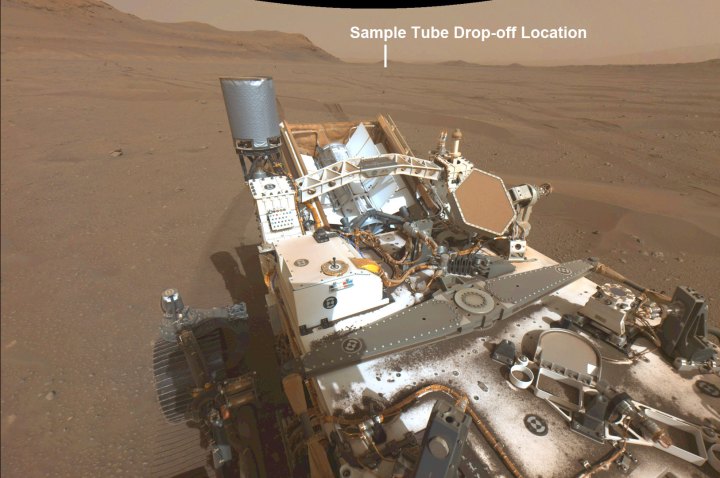The NASA Perseverance rover isn’t only exploring Mars for the scientific discoveries it can make now — it’s also paving the way for future missions which intend to bring samples back from Mars to Earth for the first time. This complicated plan involves multiple vehicles including spacecraft, a lander, and two helicopters, which will work together to collect the samples from the Martian surface, take them to orbit, and return them to Earth. But Perseverance is getting the process started by collecting samples, sealing them up in tubes, and leaving these tubes on the surface for future missions to collect.
Now, NASA and the European Space Agency (ESA) have announced that they have selected the first samples to be deposited on the surface ready for collection. “Never before has a scientifically curated collection of samples from another planet been collected and placed for return to Earth,” said Thomas Zurbuchen, associate administrator for science at NASA Headquarters, in a statement. “NASA and ESA have reviewed the proposed site and the Mars samples that will be deployed for this cache as soon as next month. When that first tube is positioned on the surface, it will be a historic moment in space exploration.”

Ten of the 14 samples which Perseverance has collected so far will be deposited in a region of the Jezero Crater called Three Forks. This region was chosen as it is flat and does not have obstacles like large boulders which could cause issues for future collection. The samples chosen for collection include both igneous and sedimentary rocks collected from the rover’s 8-mile journey across Jezero.
“Bringing these samples to our labs would allow us to achieve breakthrough science and understand the specific Jezero area,” said Gerhard Kminek, Mars Sample Return lead scientist for ESA, in a statement. “We could also learn more about the environmental conditions on Mars at a time when life emerged on Earth, and maybe on the Red Planet.”
The Jezero Crater is the site of an ancient lake, and scientists believe that it could once have potentially hosted life. To learn more about whether life could really have thrived on ancient Mars, scientists need to get samples into Earth-based labs to run more detailed experiments than those which are possible on a rover.
Once the rover has dropped off the samples, it will continue exploring and collecting more samples. “While a significant mission milestone will have taken place once those tubes are dropped, it doesn’t mean Perseverance explorations or sample collection has concluded – not by a long shot,” said Perseverance project scientist Ken Farley of Caltech. “Next, we’ll be headed up to the top of the delta to an area that from satellite imagery appears geologically rich, performing science investigations and collecting more rock cores. Mars Sample Return is going to have a lot of great stuff to choose from.”



